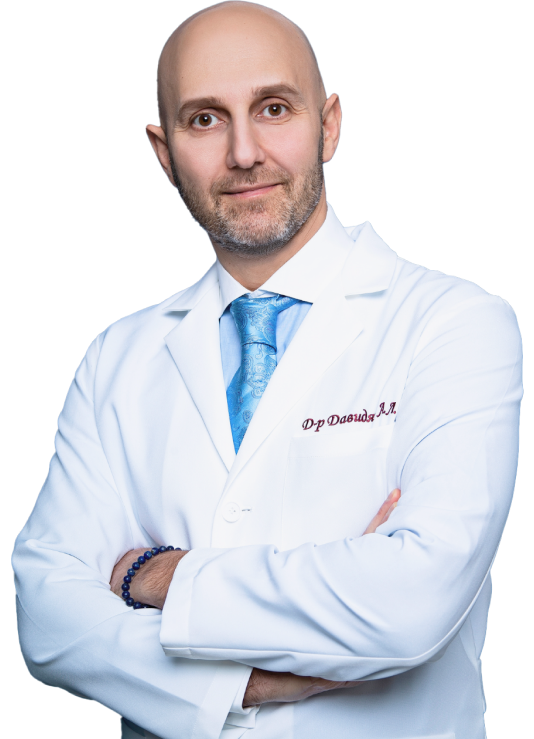© Avrora Clinic

Like magic
THE FIRST PATIENT IN RUSSIA WHO WAS TREATED WITH ALIGNERS WAS THE PATIENT
OF DR. ARAM DAVIDIAN, CHIEF PHYSICIAN
OF AVRORACLINIC.
OF DR. ARAM DAVIDIAN, CHIEF PHYSICIAN
OF AVRORACLINIC.
We asked Aram Davidyan 10 main questions about aligners – an effective and absolutely painless way to make teeth perfectly straight and at the same time solve serious problems with the bite.


In short, aligners are transparent covers, in other words, caps, which the patient can easily put on and take off himself, and while he wears them, the teeth are aligned and the bite is corrected.
A set of celluloid caps is made for the entire period of treatment.
Each subsequent cap differs in shape from the previous ones, which ensures the gradual movement of the teeth to the desired position.
The caps need to be changed every 12-14 days.
A set of celluloid caps is made for the entire period of treatment.
Each subsequent cap differs in shape from the previous ones, which ensures the gradual movement of the teeth to the desired position.
The caps need to be changed every 12-14 days.
What are aligners, in two words?
Does this method of treatment cause the patient no pain at all?
Aligners are indeed the most comfortable type of orthodontic treatment, it does not involve any manipulations that require anesthesia.
The patient only needs discipline and a conscious approach!
During the treatment, the doctor monitors the movement of the teeth and monitors whether the patient wears the aligners, because if they are not worn as much as necessary, this will inevitably affect the result.
The patient only needs discipline and a conscious approach!
During the treatment, the doctor monitors the movement of the teeth and monitors whether the patient wears the aligners, because if they are not worn as much as necessary, this will inevitably affect the result.
How many hours a day should you wear caps?
They can be removed during meals, which is very convenient. The rest of the time, including sleep, you need to wear them.
What is the fundamental difference between aligners and braces?
First of all, the aligners are not visible on the teeth. And this is especially important for patients, since it is a matter of comfort in society.
Secondly, it is greater mobility and freedom for the patient, he needs to come to a regular appointment much less often, as happens when wearing braces.
And unscheduled ones, when something comes off, are completely excluded. And from the point of view of doctors, the difference is also that aligners cope with a number of pathologies more successfully.
Over almost 20 years of using caps, we have found out very interesting points - with aligners, both distal occlusion and mesial bite and crossbite are perfectly treated, that is, those complex pathologies that are not amenable or are more difficult to treat with standard bracket systems.
Secondly, it is greater mobility and freedom for the patient, he needs to come to a regular appointment much less often, as happens when wearing braces.
And unscheduled ones, when something comes off, are completely excluded. And from the point of view of doctors, the difference is also that aligners cope with a number of pathologies more successfully.
Over almost 20 years of using caps, we have found out very interesting points - with aligners, both distal occlusion and mesial bite and crossbite are perfectly treated, that is, those complex pathologies that are not amenable or are more difficult to treat with standard bracket systems.
Davidyan
Aram Lenserovich
Professor, chief physician of Avroraclinic, implant surgeon, dentist, scientific director of international dental congresses, author of several surgical methods. was the first in the world to performed an operation to eliminate tissue deficiency in the implant area.
1
3
2
4
Fill in the data
and we will contact you soon
A MODERN AND COMFORTABLE METHOD OF ORTHODONTICS - TREATMENT OF BITE WITH TEETH ALIGNMENT TRAPS.
ALIGNERS ARE UNNOTICEABLE ON THE TEETH AND, WHEN WEARING REGULARLY, THEY SOLVE COMPLEX PROBLEMS OF BITE TREATMENT.
ALIGNERS ARE UNNOTICEABLE ON THE TEETH AND, WHEN WEARING REGULARLY, THEY SOLVE COMPLEX PROBLEMS OF BITE TREATMENT.
From the distance at which you usually communicate with people, the aligners are completely invisible. That is, if a person does not say that he has aligners, no one will notice them. Only in the first days of wearing will a change in diction be noticeable, which is insignificant and quickly passes.
Are the aligners completely invisible on the teeth or barely noticeable?
Do aligners need to be ordered from foreign countries?
20 years ago, this was indeed the case, but much has changed since then. The aligners are now made in laboratories in Russia and in Armenia. And thanks to high computer technologies, the process of their manufacture has become even easier and more comfortable for the patient: we no longer need to make dental impressions and cast jaw models - 3D scanning is now used for this.
What other advantages does digital 3D scanning of teeth provide?
We receive the most accurate information about the condition and structure of the patient's dentition. Based on this, the computer models the result that we should receive at the end of the treatment.
A special program calculates with absolute accuracy what exact tooth movements need to be made to achieve this result, and a new cap is made for each micro-movement. Thus, we immediately receive a set of caps for the entire treatment period.
A special program calculates with absolute accuracy what exact tooth movements need to be made to achieve this result, and a new cap is made for each micro-movement. Thus, we immediately receive a set of caps for the entire treatment period.
What are aligners primarily intended for - to straighten teeth or to correct bite?
In fact, uneven teeth and a correct bite are incompatible things. Yes, the patient may be primarily interested in solving the aesthetic part of the problem, but uneven teeth are one of the indicators of an incorrect bite. Therefore, aligners solve a whole range of problems at once.
How long does treatment with aligners take?
Based on my experience, treatment takes from several months to a year. The duration of treatment depends not only on the complexity of the bite problem, but also on the patient's age. The younger the patient, the faster the teeth move to the desired position.
7
8
9
10
Are aligners really more effective than braces?
Treatment with aligners is really more effective and takes less time. I thought about why this happens and came to the conclusion that it is because of the individual production of the caps.
Unlike the standardized braces system, which exists in 2-3 sizes for all patients, aligners are made according to the shape, size and location of the dental arch, the inclination of the teeth and many other parameters. That is why the problem can be solved faster.
Unlike the standardized braces system, which exists in 2-3 sizes for all patients, aligners are made according to the shape, size and location of the dental arch, the inclination of the teeth and many other parameters. That is why the problem can be solved faster.
5
6
ПОДРОБНЕЕ
Записаться на приём
ARTICLES BY ARAM DAVIDYAN
Find out the cost of services
LEAVE A REQUEST AND WE WILL CONTACT YOU
Contact us by phone or email :
+37412988335
[email protected]
0010, Armenia, Yerevan, 3/1, 2 floor Buzand St
**There is private parking
+37412988335
[email protected]
0010, Armenia, Yerevan, 3/1, 2 floor Buzand St
**There is private parking
Contact us by phone or email :
+37411988335
[email protected]
0010, Armenia, Yerevan, 3/1, 2 floor Buzand St
**There is private parking
How to get to us →
+37411988335
[email protected]
0010, Armenia, Yerevan, 3/1, 2 floor Buzand St
**There is private parking
How to get to us →
© Constellation Aurora LLC, 2007-2023.
All rights reserved. Any use or copying of materials or a selection of site materials, design elements and decoration is allowed only with the permission of the copyright holder and only with reference to the source: www.avroraclinic.am
All rights reserved. Any use or copying of materials or a selection of site materials, design elements and decoration is allowed only with the permission of the copyright holder and only with reference to the source: www.avroraclinic.am







